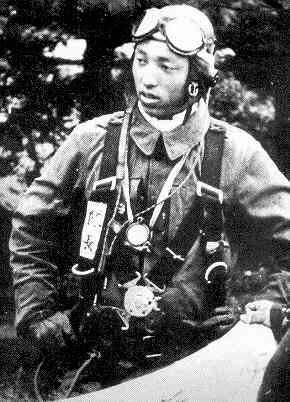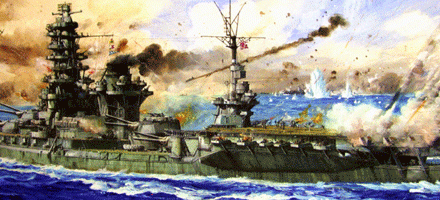
Terrific web-site dedicated to the pilots of Imperial Japan who sacrificed their lives for their homeland and emperor.
Visit: http://www.kamikazeimages.net/index.htm
Originally shared by Pete Panozzo
KAMIKAZE PILOT – SECOND LIEUTENANT HARUO ARAKI
Haruo Araki in photo
at Chiran Air Base [1]
(taken by Toshirō Takagi on
May 10, 1945, the day
before Araki’s sortie)
Last Letter from Second Lieutenant Haruo Araki to His Wife
On May 11, 1945, Army Second Lieutenant Haruo Araki, 51st Shinbu Special Attack Squadron Commander, took off from Chiran Air Base as part of a mass kamikaze attack of Navy and Army aircraft. One month earlier he had said to his new wife Shigeko that he would be back when it rained, but he never returned.
Haruo and Shigeko grew up together in Tōkyō when Haruo’s father and Shigeko’s mother married. When Haruo suddenly returned home for an overnight leave at about 11 p.m. on April 9, 1945, he asked whether he could marry Shigeko. Even though his parents and Shigeko knew he had been assigned to a tokkō (special attack) squadron, the marriage ceremony was held that night in the midst of tears from all of them. Haruo spent only four hours with his new wife Shigeko before he had to return to base.
In mid-June, reporter Toshirō Takagi visited the home of Shigeko and her parents. Takagi gave them the news that Haruo had been killed in action on May 11, and he delivered his last letters and his hair and nail clippings. Haruo’s letter to Shigeko is translated below:
Shigeko,
Are you doing well?
One month has passed. The happy dream has vanished, and tomorrow I make an attack on an enemy ship. I will cross the River Styx [2] to the next world along with some Americans.
Looking back, I have been very unkind to you. It has been my habit to treat you unkindly and have regrets afterward. Please forgive me.
Haruo Araki in photo
at Chiran Air Base [1]
(taken by Toshirō Takagi on
May 10, 1945, the day
before Araki’s sortie)
Last Letter from Second Lieutenant Haruo Araki to His Wife
On May 11, 1945, Army Second Lieutenant Haruo Araki, 51st Shinbu Special Attack Squadron Commander, took off from Chiran Air Base as part of a mass kamikaze attack of Navy and Army aircraft. One month earlier he had said to his new wife Shigeko that he would be back when it rained, but he never returned.
Haruo and Shigeko grew up together in Tōkyō when Haruo’s father and Shigeko’s mother married. When Haruo suddenly returned home for an overnight leave at about 11 p.m. on April 9, 1945, he asked whether he could marry Shigeko. Even though his parents and Shigeko knew he had been assigned to a tokkō (special attack) squadron, the marriage ceremony was held that night in the midst of tears from all of them. Haruo spent only four hours with his new wife Shigeko before he had to return to base.
In mid-June, reporter Toshirō Takagi visited the home of Shigeko and her parents. Takagi gave them the news that Haruo had been killed in action on May 11, and he delivered his last letters and his hair and nail clippings. Haruo’s letter to Shigeko is translated below:
Shigeko,
Are you doing well?
One month has passed. The happy dream has vanished, and tomorrow I make an attack on an enemy ship. I will cross the River Styx [2] to the next world along with some Americans.
Looking back, I have been very unkind to you. It has been my habit to treat you unkindly and have regrets afterward. Please forgive me.
I feel as if my heart will break when I think of your long life ahead. Please somehow be strong in spirit and be happy. After I am gone, please take care of my father in place of me.
Living for an eternal noble cause
Protecting always our country from the despicable enemy
Haruo
Yūkyū [3] Hikōtai Commander
Cook and Cook in Japan at War: An Oral History (1992, 319-27) have a fascinating chapter entitled “Bride of a Kamikaze” in which Shigeko tells her story [4]. She describes her relationship with Haruo prior to their marriage (322):
I’d always fought with him. “I can’t stand the sight of you,” he used to say. I’d tell him, “I don’t care either. There are lots of boys better than you. I’ll marry one of them.” We were the same age. We made good opponents. He must have always thought he’d marry me. Somehow, I thought if he became a lieutenant we’d be together, even if we did fight. I was always conscious of his presence, as if we were engaged. If he’d married someone else, I’d have been furious.
Before the mid-June 1945 visit by journalist Toshirō Takagi, Shigeko found out she was pregnant. Her son was born on Christmas Day in 1945, and she named him Ikuhisa, which is the Japanese reading of the two kanji characters in Haruo’s squadron name of Yūkyū meaning “eternity.” However, on November 5, 1946, Ikuhisa died in Shigeko’s arms when he took ill and stopped breathing. Shigeko fainted at the funeral when putting her son’s remains in the family grave together with a wooden box that contained Haruo’s items delivered by Takagi from Chiran.
Letter translated by Bill Gordon
August 2008
Source of Letter
The original Japanese letter, both a copy of the original and a typed version, used for this English translation comes from Mediasion (2006, 80).
Notes
1. This posed photo has been cropped for this web page. The original photo also shows Second Lieutenant Kunio Kuroki (left of Araki), 55th Shinbu Squadron Commander, and Second Lieutenant Masashi Katsura (right of Araki), 65th Shinbu Squadron Commander (Makino 1979, 219). Araki, Kuroki, and Katsura graduated together from the Imperial Japanese Army Air Academy in the 57th class, and they each led a squadron from Chiran Air Base on May 11, 1945.
2. The letter has the term “Sanzu River,” which is the Japanese Buddhist equivalent of the River Styx.
3. Yūkyū means “eternal.” The poem that ends his letter starts with yūkyū.
4. Sheftall in his book Blossoms in the Wind (2005, 303-51) has one part on Shigeko’s story. Sheftall’s book includes a few more details than Cook and Cook’s Japan at War: An Oral History (1992, 319-27), but Japan at War’s more concise story told in Shigeko’s own words has much more of an emotional impact. Much of the historical information for this web page comes from Cook and Cook.
Sources Cited
Cook, Haruko Taya, and Theodore F. Cook. 1992. Japan at War: An Oral History. New York: The New Press.
Makino, Kikuo, ed. 1979. Ichioku nin no shōwa shi (Nihon no senshi 4): Tokubetsu kōgekitai (Shōwa history of 100 million people (Japan’s war history, Volume 4): Special Attack Corps). Tōkyō: Mainichi Shinbunsha.
The Mediasion Co. 2006. Tada hitosuji ni yuku (I go with complete commitment). Hiroshima: The Mediasion Co.
Sheftall, M.G. 2005. Blossoms in the Wind: Human Legacies of the Kamikaze. New York: NAL Caliber.





Recent Comments